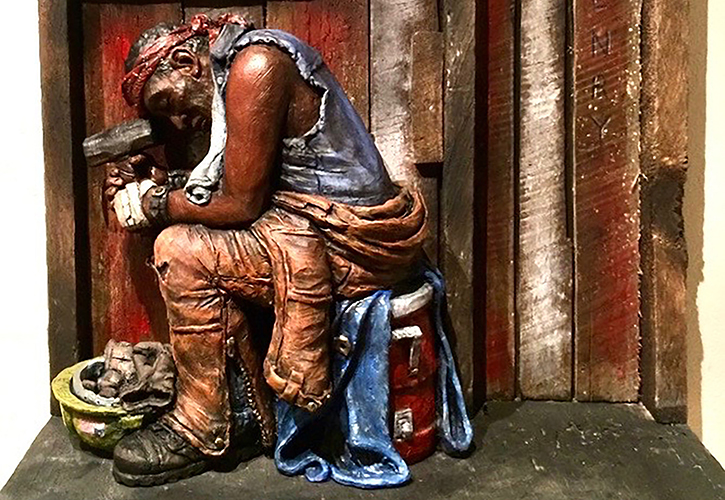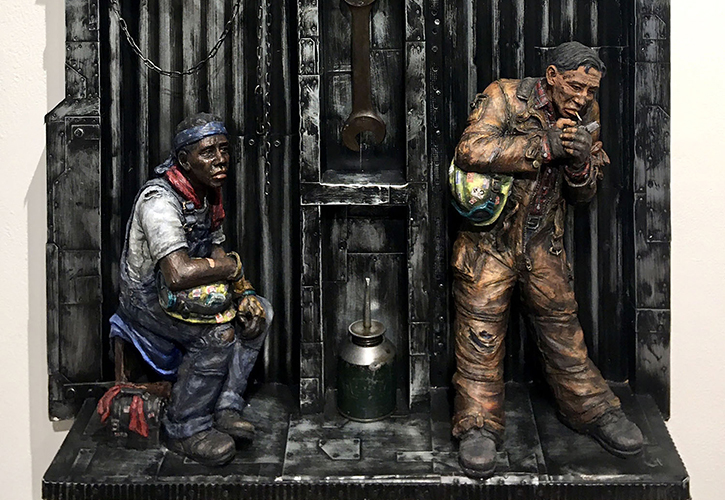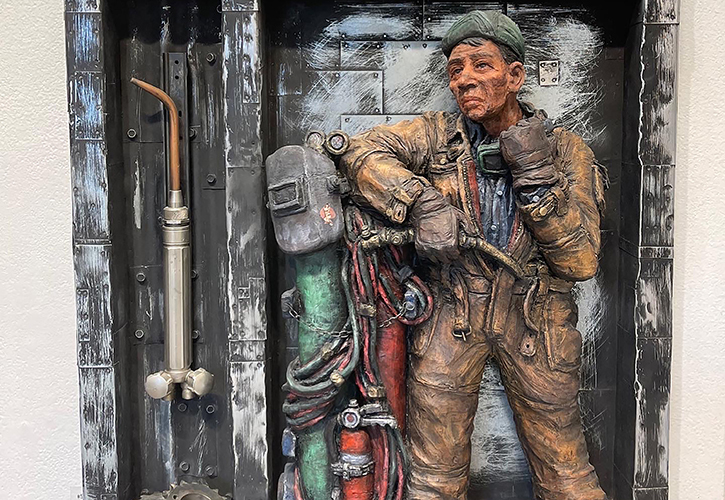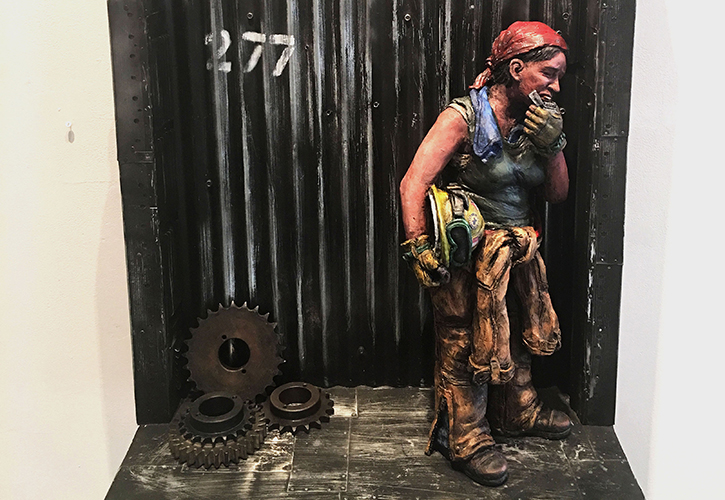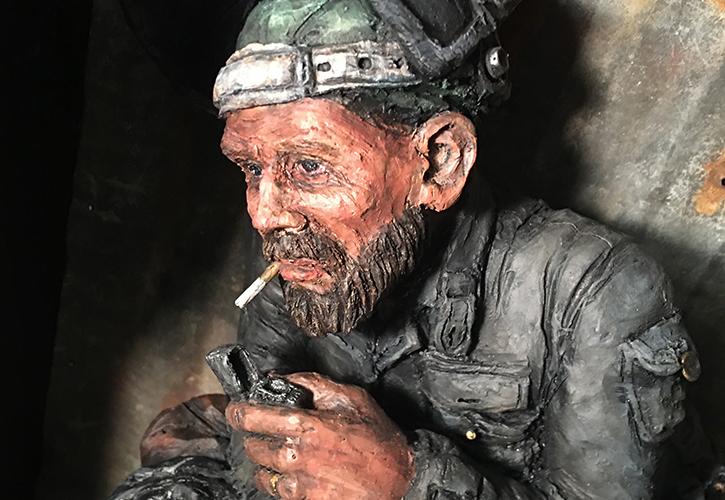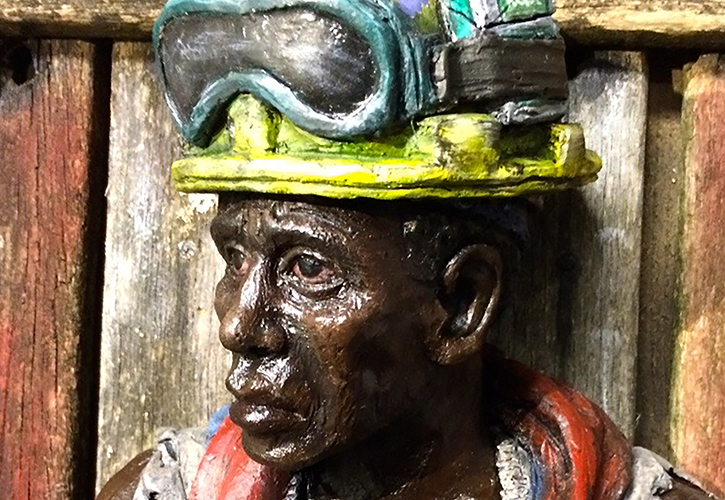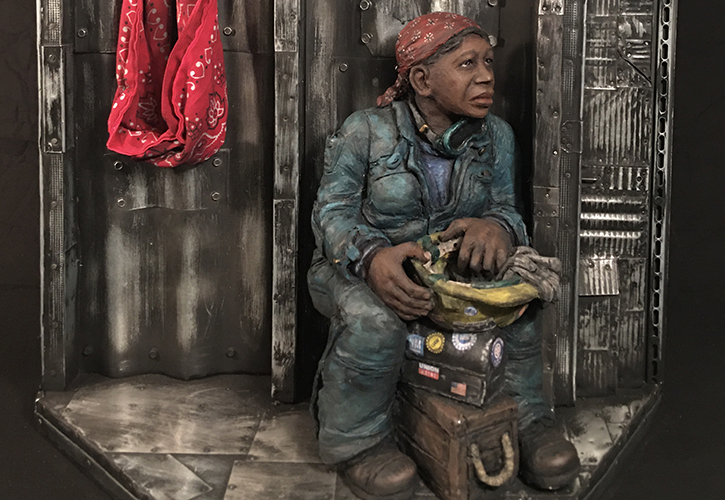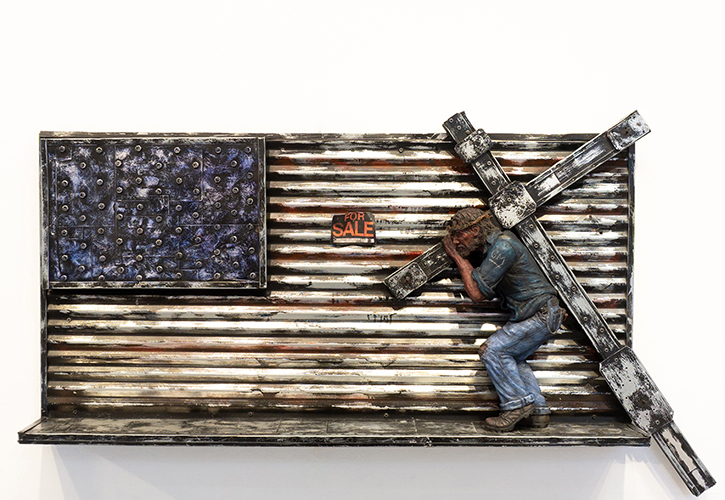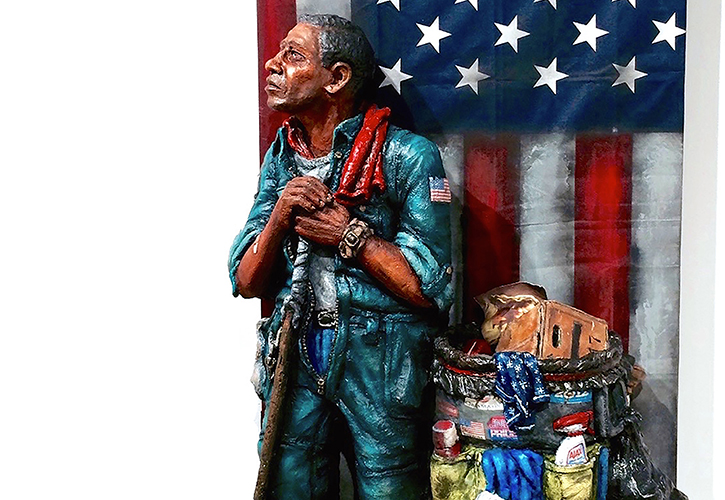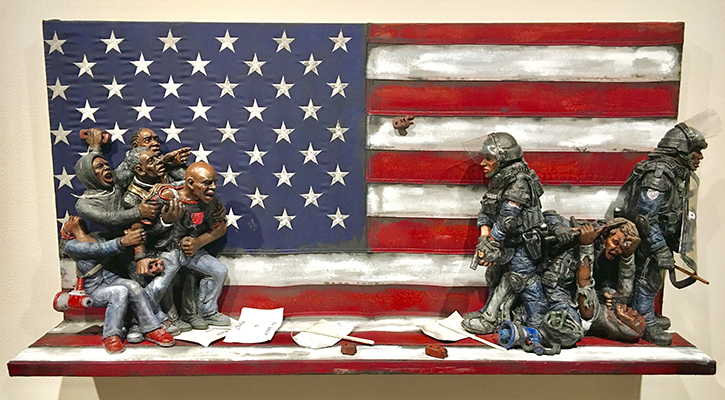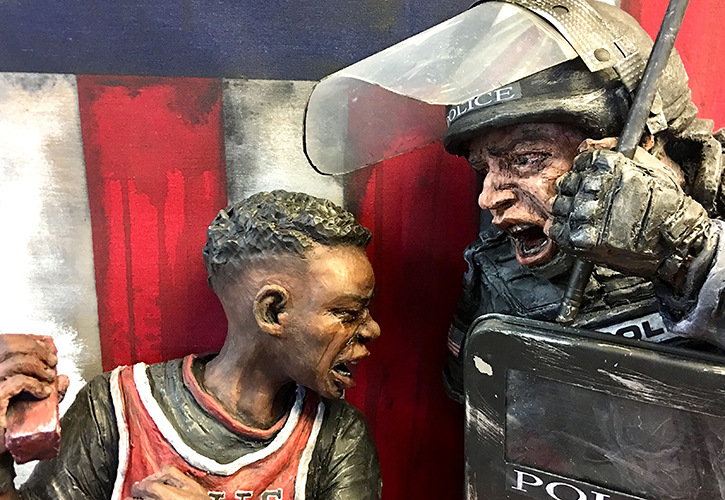College of Arts and Sciences Newsroom
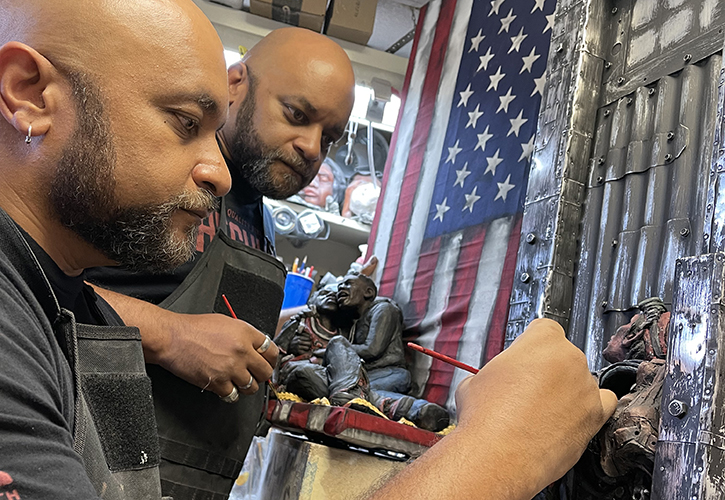
Twin art professors’ work honors blue-collar workers, addresses social justice issues
By Dave Larsen
Like many people in their hometown of New Castle, Indiana, Kyle and Kelly Phelps followed in their father’s footsteps and took jobs on the assembly line at the local Chrysler plant. But when the factory laid off half of its workers during the mid-1990s, they forged a new path, applying for grants and graduate school.
Today, the identical twin brothers are celebrated sculptors and art educators. Their work, which explores race relations and the plight of the blue-collar worker in the U.S., has been featured in more than 200 national and international exhibitions. It is included in many museum collections, as well as in the private collections of filmmaker Michael Moore and actor Morgan Freeman.
Kyle Phelps is professor and head of the sculpture area in the University of Dayton Department of Art and Design. Kelly Phelps is professor, head of the sculpture and ceramic areas and former chair of the Xavier University Department of Art in Cincinnati.
“We were slated to be factory workers and we ended up in academia, which is like night and day,” Kelly said. “It just goes to show that your path can change.”
Currently, the twins are part of “The Gathering: Works from Contemporary Black American Ceramic Artists,” a national touring exhibition featuring artists from the book by Donald A. Clark and Chotsani Elaine Dean to be published Oct. 28.
On Nov. 11, they will be featured presenters at the 2022 Ohio Art Education Association conference at the Dayton Convention Center. Their presentation will offer ideas on how to bring difficult topics to the forefront for students.
“Unfortunately, this world is not just about cows in the pasture and pretty flowers,” Kyle said. “We have difficult topics that we all live around and it’s everywhere. There are going to be times when our students are going to be confronted and have to deal with those issues as well, so a lot of our artwork is based on social politics — sometimes the not-pretty things in this world.”
The twins’ creative process and subject matter both draw on their past. They combine found objects such as gears and corrugated metal with handcrafted ceramic figures of factory workers, protestors and homeless people to create visual narratives about the everyday struggles of common people.
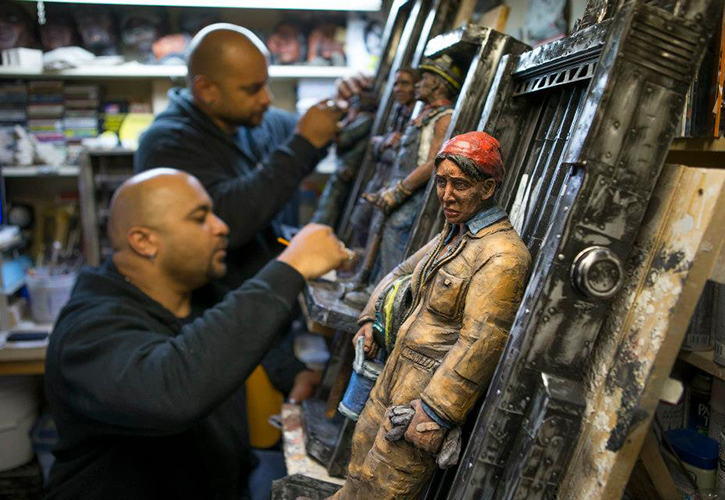
They work collaboratively, sculpting and painting pieces side-by-side in their small studio in Centerville, Ohio, rotating work on the figures between them.
“A lot of that comes from working in the plant on the assembly line,” Kyle said. “We work on multiple different pieces at the same time and you have to have this subconscious OK to have your twin brother work on your work. We could start independent works, but it always comes back full circle that it’s our work. So, we contaminate each other’s work. It’s not one authorship, it’s our work.”
Kelly likened it to being “one person in two separate bodies.” They completed their formal training together, and hold Bachelor of Fine Arts degrees from Ball State University and Master of Fine Arts degrees from the University of Kentucky.
They were raised Catholic and draw inspiration from religious iconography and relief sculptures such as the Stations of the Cross. Both work at private Catholic universities, which have given them a platform to address social justice issues such as poverty, gun violence and police misconduct in their art.
“I think having that strong background and with the mission of both institutions being so heavily involved with being for others, it really made Kyle and I feel more comfortable talking about these difficult topics of class and race,” Kelly said.
In their classrooms, the twins assign projects related to social issues such as immigration, homelessness and the country’s treatment of military veterans. They also emphasize the development of hand-eye skills, rather than using digital tools.
“Basic manual labor,” Kelly said. “That part comes back from our experiences working in the plant.”
Honoring common laborers remains central to their art.
“Our work is wrapped around just giving light to the people that are underrepresented, because you don’t see a whole lot of work about the guy who works at the filling station or the postman or the janitor,” Kyle said. “For us to pay homage and give respect to people like that is what keeps us going and motivated. Also, it has a little linkage to where we came from and how we grew up and our background.”
For more information visit the UD Department of Art and Design’s website.

